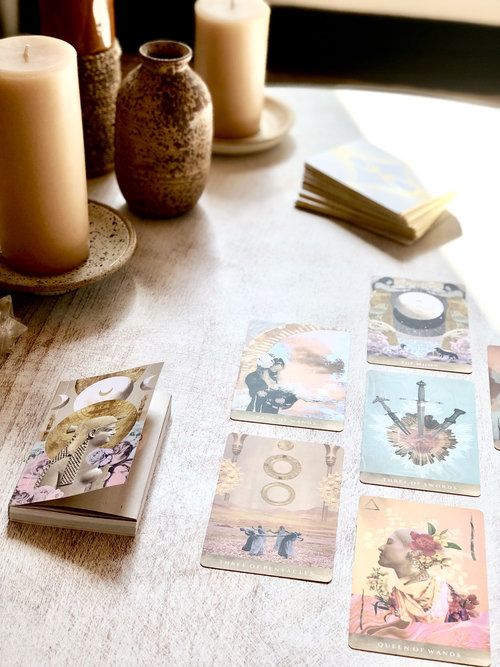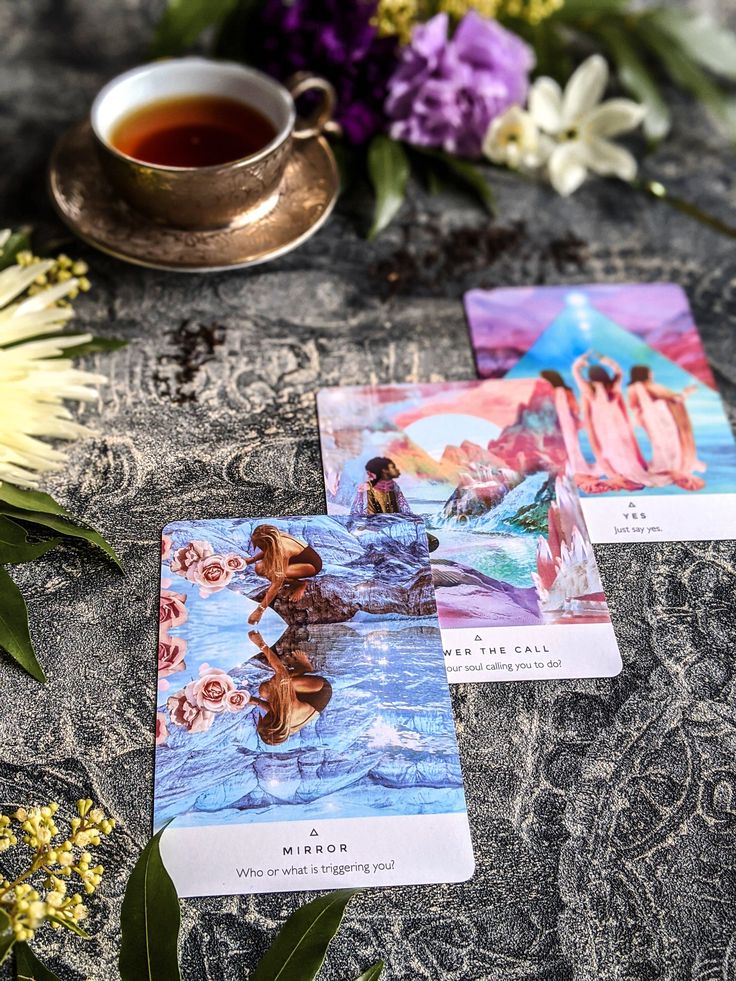Have you ever been intrigued by the mysterious world of card divination? Perhaps you’ve seen beautifully illustrated cards being used to reveal hidden truths and offer guidance. Two of the most popular tools for this purpose are Tarot and Oracle cards. While they may seem similar at first glance, they serve different purposes and have distinct characteristics. Understanding the differences between Tarot and Oracle cards can help you choose the right deck for your needs, whether you’re a curious beginner or a seasoned reader looking to expand your practice.
In this article, we’ll dive into the fascinating histories, structures, and uses of both Tarot and Oracle cards. We’ll explore their unique features, discuss how to choose between them, and even show you how to integrate both into your spiritual practice. Let’s embark on this journey to uncover the mysteries of Tarot and Oracle cards.
Table of Contents
ToggleWhat Are Tarot Cards?
History and Origins
Tarot cards have a rich and storied history that dates back to the mid-15th century in Europe. Originally, they were used for playing a game called tarocchi in Italy. It wasn’t until the late 18th century that Tarot cards began to be used for divination and esoteric purposes. Since then, they have evolved into a powerful tool for spiritual insight and personal guidance.
Structure and Composition
A standard Tarot deck consists of 78 cards, divided into two main sections: the Major Arcana and the Minor Arcana. The Major Arcana includes 22 cards, each depicting significant life events or spiritual lessons, such as The Fool, The Magician, and The World. The Minor Arcana is composed of 56 cards divided into four suits—Cups, Pentacles, Swords, and Wands—each representing different aspects of life and elements. These suits are similar to the suits in a regular deck of playing cards but come with their own unique symbolism and meanings.
Symbolism and Themes
Tarot cards are renowned for their intricate and symbolic imagery. Each card is rich with meaning, often depicting archetypal figures, mythological scenes, and powerful symbols. The symbolism in Tarot cards can be deep and complex, offering layers of interpretation that provide insights into various life situations and spiritual questions. The themes in Tarot often revolve around personal growth, transformation, challenges, and the journey of the soul.
Usage
Tarot cards are primarily used for divination, self-reflection, and spiritual guidance. Readers use different spreads, or layouts, to interpret the cards and provide answers to specific questions or insights into general life situations. Spreads can range from a single card pull to 3-card spreads and to more complex layouts, such as the classical Celtic Cross. Tarot can help you gain clarity, uncover hidden patterns, and explore potential outcomes, making it a valuable tool for anyone seeking deeper understanding and direction.

Moonchild Tarot by Danielle Noel | Via Pinterest
What Are Oracle Cards?
History and Origins
Oracle cards have a more varied and less defined history compared to Tarot cards. While Tarot has roots going back to the 15th century, Oracle cards emerged more recently and lack a single point of origin. They have been used in various forms across different cultures, but the modern Oracle cards we know today began gaining popularity in the late 20th century. These cards are designed to offer guidance and insights, much like Tarot, but they allow for greater creative freedom in their themes and structures.
Structure and Composition
Unlike Tarot decks, which follow a strict 78-card structure, Oracle cards have no fixed number of cards. An Oracle deck can contain any number of cards, from a small set of 30 to a large collection of 100 or more. The structure of Oracle decks is highly flexible and can vary widely depending on the creator’s vision. Each deck is usually centered around a specific theme, such as angels, spirit animals, affirmations, or chakras, allowing for a broad range of topics and areas of focus.
Symbolism and Themes
Oracle cards are known for their diverse symbolism and themes. Each deck reflects the unique perspective and intention of its creator, which means the imagery and messages can vary greatly from one deck to another. Some decks might feature detailed, symbolic artwork similar to Tarot, while others may use simple, uplifting messages or abstract designs. The themes of Oracle decks can range from the mystical and spiritual to the practical and everyday, offering a versatile tool for personal growth and reflection.
Usage
Oracle cards are used for divination, guidance, and personal growth, much like Tarot cards. However, their flexibility and simplicity often make them more accessible for beginners. Readers typically draw a single card or a small spread to receive a message or insight. Because of their diverse themes, Oracle cards can be used for a wide array of purposes, such as gaining clarity on a specific issue, seeking daily inspiration, connecting with spiritual guides, or enhancing self-awareness. Their open-ended nature allows users to adapt them to their personal spiritual practices and needs.

Key Differences Between Tarot and Oracle Cards
Reading Style
The reading styles for Tarot and Oracle cards differ significantly due to their structural differences. Tarot readings typically involve more complex spreads and detailed interpretations. Each card’s position in a spread and its relationship to other cards can influence the reading, requiring a deeper understanding of Tarot’s symbolism and structure.
Oracle card readings are generally simpler and more intuitive. Readers often draw a single card or use a small spread to receive clear and direct messages. The focus is usually on the overall theme or message of the card, rather than intricate positional meanings. This makes Oracle cards more accessible for quick guidance and daily inspiration.
Purpose and Application
Both Tarot and Oracle cards are used for divination, guidance, and personal growth, but their applications can vary. Tarot is often used for in-depth explorations of complex questions and issues, offering detailed insights into past, present, and future influences. Its structured nature makes it ideal for those seeking comprehensive understanding and detailed analysis.
Oracle cards, with their flexibility and diverse themes, are well-suited for specific guidance, affirmation, and inspiration. They can be used to provide quick answers, upliftment, and encouragement, making them a versatile tool for everyday use. Oracle decks are also excellent for focusing on particular aspects of life, such as spiritual growth, emotional healing, or personal empowerment.
Choosing Between Tarot and Oracle Cards
When choosing between Tarot and Oracle cards, personal preference plays a significant role. Consider what type of imagery and themes resonate with you. If you prefer a structured approach with rich symbolism and detailed interpretations, Tarot might be the better choice. If you enjoy a more flexible and intuitive approach with a variety of themes, Oracle cards could be more appealing.
Think about how you intend to use the cards. If you’re looking for detailed guidance on complex issues and enjoy deep, analytical readings, Tarot cards are ideal. For those seeking daily inspiration, specific messages, or a quick and straightforward tool for guidance, Oracle cards are perfect.
Finally, consider the complexity and ease of learning. Tarot requires more study and practice to master its intricate system and symbolism. Oracle cards are generally easier to learn and use, making them accessible for beginners or those who prefer a more intuitive approach.

Work your Light Oracle by Danielle Noel | Via Pinterest
Integrating Tarot and Oracle Cards
Complementary Use
Tarot and Oracle cards can complement each other beautifully in readings, offering a more comprehensive and nuanced approach to divination. While Tarot provides in-depth insights and detailed analysis, Oracle cards offer clear and direct messages tailored to specific themes. By combining both types of cards, readers can access a broader range of guidance and inspiration.
Tarot cards can serve as the backbone of a reading, providing a detailed exploration of the current situation, underlying influences, and potential outcomes. Oracle cards, with their varied themes and straightforward messages, can then offer additional clarity, affirmation, or encouragement to complement the Tarot insights. Together, they create a dynamic and versatile divination tool that addresses both the analytical and intuitive aspects of the reading.
Blended Spreads
Here are a few examples of spreads that incorporate both Tarot and Oracle cards for enhanced insights:
- Past, Present, Future Spread with Oracle Insight
- Position 1 (Past – Tarot): Use three Tarot cards to explore influences from the past and how they have shaped the present.
- Position 2 (Present – Tarot): Draw three Tarot cards to gain insights into the current situation and challenges.
- Position 3 (Future – Tarot): Select three Tarot cards to examine potential outcomes and future developments.
- Oracle Insight (Overall Guidance): Draw a single Oracle card to provide an overall message or guidance to the querent, offering clarity and inspiration for the journey ahead.
- Elemental Balance Spread
- Earth (Physical Realm – Tarot): Draw one Tarot card to explore practical matters, material concerns, and stability.
- Water (Emotional Realm – Tarot): Select one Tarot card to delve into emotional aspects, relationships, and intuitive insights.
- Air (Mental Realm – Tarot): Choose one Tarot card to examine thoughts, beliefs, and communication.
- Fire (Spiritual Realm – Tarot): Pick one Tarot card to explore spiritual growth, creativity, and passion.
- Oracle Insight (Overall Balance): Draw an Oracle card to provide an overarching message that integrates the elements, offering guidance on achieving balance and harmony in life.
Developing a Personal Practice
Here are some tips for developing a unique divination practice that incorporates both Tarot and Oracle cards:
- Experiment and Explore: Take the time to experiment with different Tarot and Oracle decks to find the ones that resonate most with you. Explore various themes, styles, and artistic interpretations to discover what works best for your personal practice.
- Blend Intuition with Study: Balance intuitive insights with structured study and practice. While intuition plays a vital role in card reading, a solid understanding of Tarot symbolism and Oracle themes can deepen your readings and enhance your interpretations.
- Create Your Own Spreads: Don’t be afraid to create your own custom spreads that integrate both Tarot and Oracle cards. Tailor the spreads to your specific questions, intentions, and areas of focus, allowing for a more personalized and insightful reading experience.
- Journal Your Insights: Keep a divination journal to record your readings, interpretations, and insights. Reflect on the messages received from both Tarot and Oracle cards, noting any recurring themes, patterns, or synchronicities. This practice can deepen your understanding and connection with the cards over time.
- Trust Your Inner Wisdom: Ultimately, trust your inner wisdom and intuition as you work with Tarot and Oracle cards. Allow yourself to connect with the cards on a deeper level, trusting that the guidance you receive will provide valuable insights and support on your journey of self-discovery and spiritual growth.
Conclusion
As you embark on your journey with Tarot and Oracle cards, remember that the magic lies in your own intuition and connection with the cards. Trust yourself, explore with an open heart and mind, and allow the wisdom of the cards to guide you on your path. Whether you’re seeking deep insights, daily inspiration, or spiritual guidance, the world of card divination offers endless possibilities for growth and self-discovery.
Card divination is more than just a tool for fortune-telling; it’s a powerful means of self-reflection, spiritual exploration, and personal growth. Through Tarot and Oracle cards, we gain access to the wisdom of the universe, tapping into timeless truths and hidden insights that illuminate our path forward. As we navigate life’s twists and turns, the guidance of the cards serves as a beacon of light, offering clarity, inspiration, and empowerment along the way. Embrace the journey, trust the process, and let the magic of the cards lead you to greater understanding and fulfillment.







